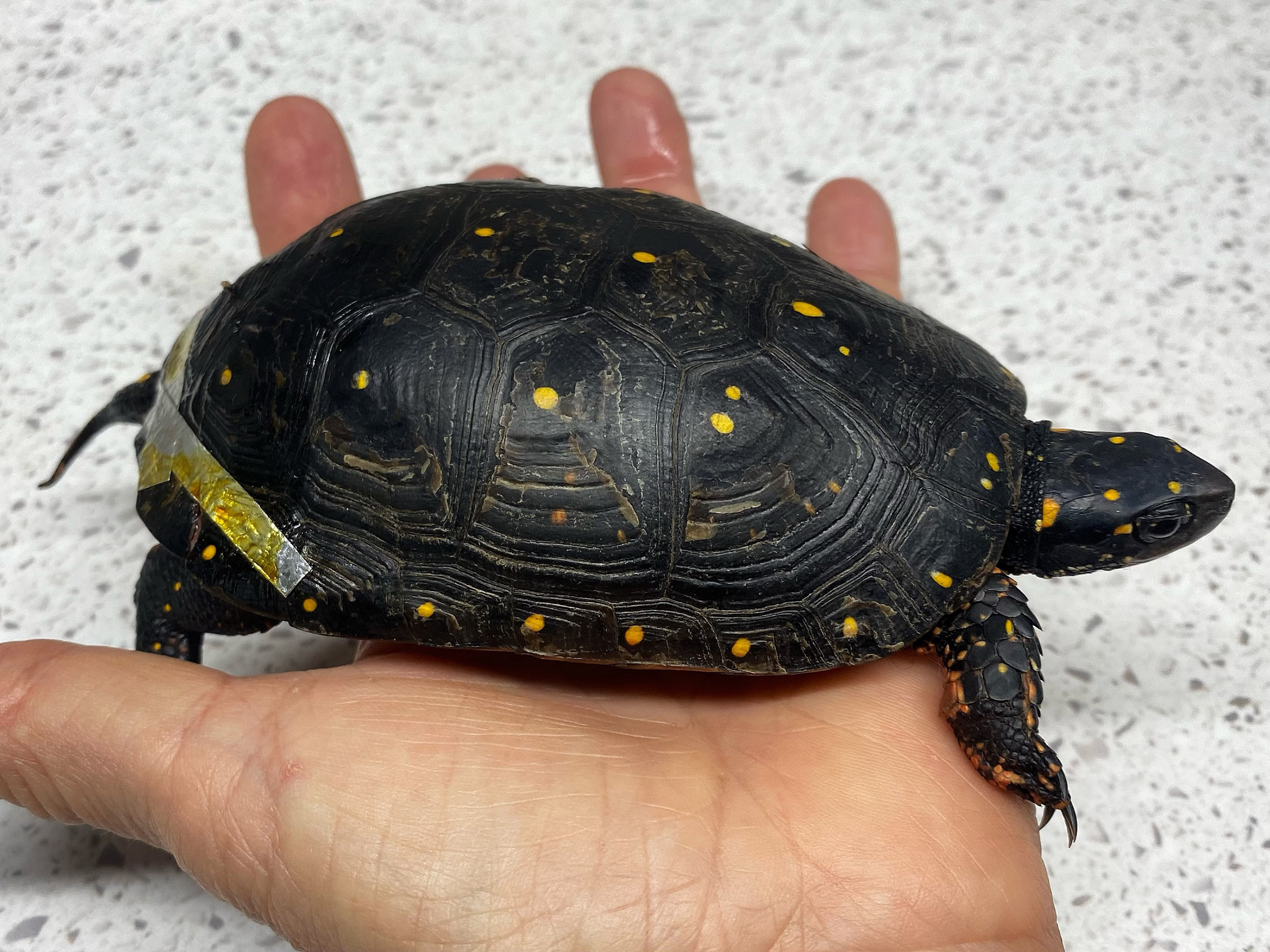This young male was picked up yesterday evening by a driver who noticed him injured on the road. She did exactly the right things: called us, immediately drove him here (halfway across the state), and even made a donation towards his care. Her only mistake was the same one nearly every finder makes when they call about an injured turtle—they misidentify it.
The first question we ask when people call with a turtle issue is “what species is it?” Like most people who come upon a small, smooth, blackish turtle, the finder assumed that it was “a common pond turtle, the kind you see everywhere piled up on rocks and logs.” That would be the Eastern painted turtle, currently the most common turtle species in Connecticut.
This, however, is a Spotted turtle, once the most common turtle species in Connecticut but now, thanks to human activity, a Species of Special Concern. A semi-aquatic denizen of vernal pools and marshy woodland wetlands, not open ponds. A turtle with spots.
Yes, it’s important to get appropriate help for any injured turtle. But it’s critical for those on the Endangered Species list. The loss of just one individual can spell disaster for their declining populations. And unlike most other animals, it takes at least a decade for most turtles to reach maturity and be able to breed. That’s ten years or more of surviving in a landscape full of roads, cars, dogs, construction equipment and captors before being able to make more turtles–a tall order in a crowded state. This turtle is on the cusp of adulthood.
So there’s no time to waste or room for error when one of these lives hangs in the balance. Learn to recognize the turtle species in your state, and if you find a listed animal in distress, get it to the most qualified turtle rehabilitator you can find as quickly as you can. Thanks to the quick and generous actions of the woman who rescued this turtle, he should be good to go in a few months, and have a good shot at perpetuating his species.


